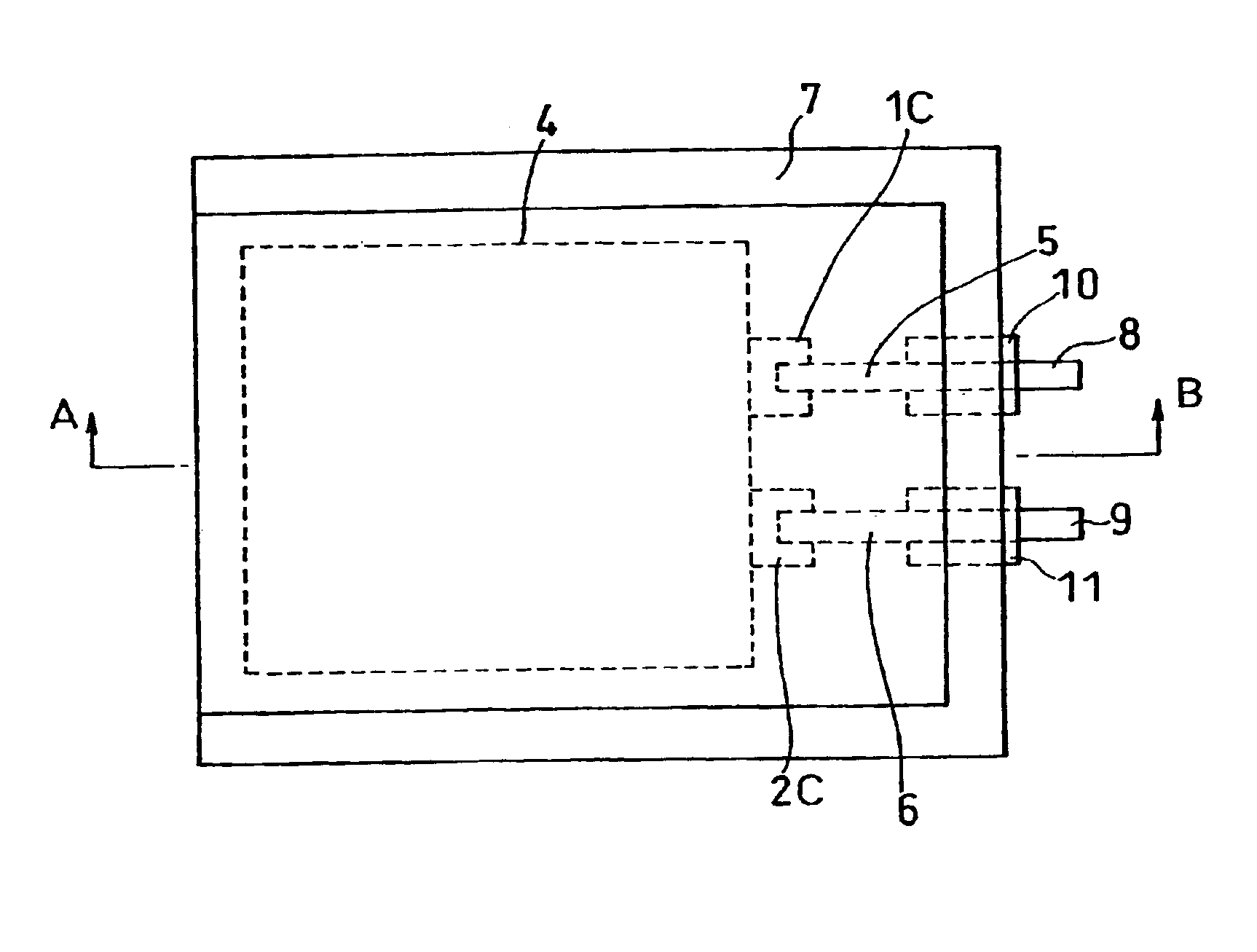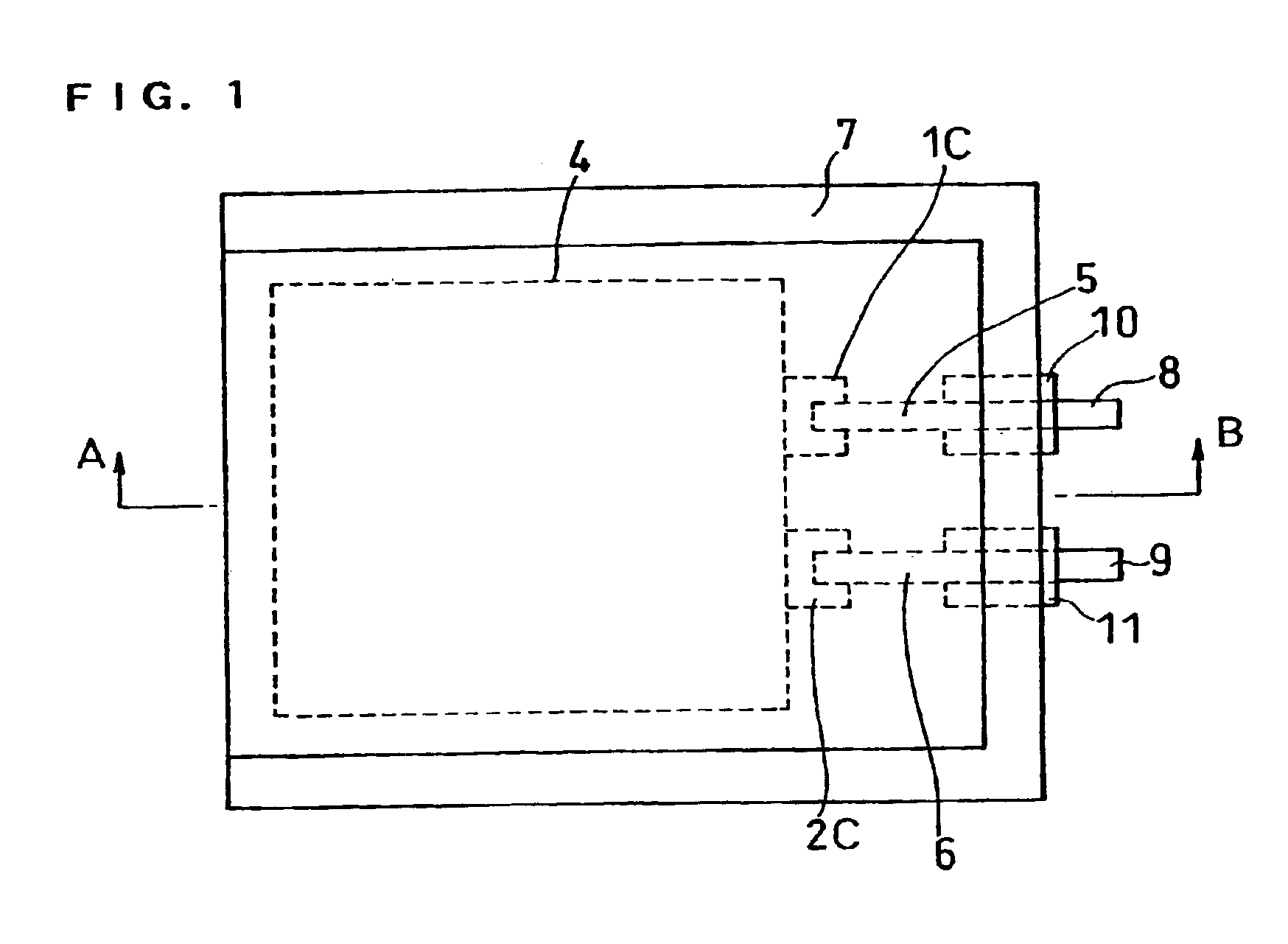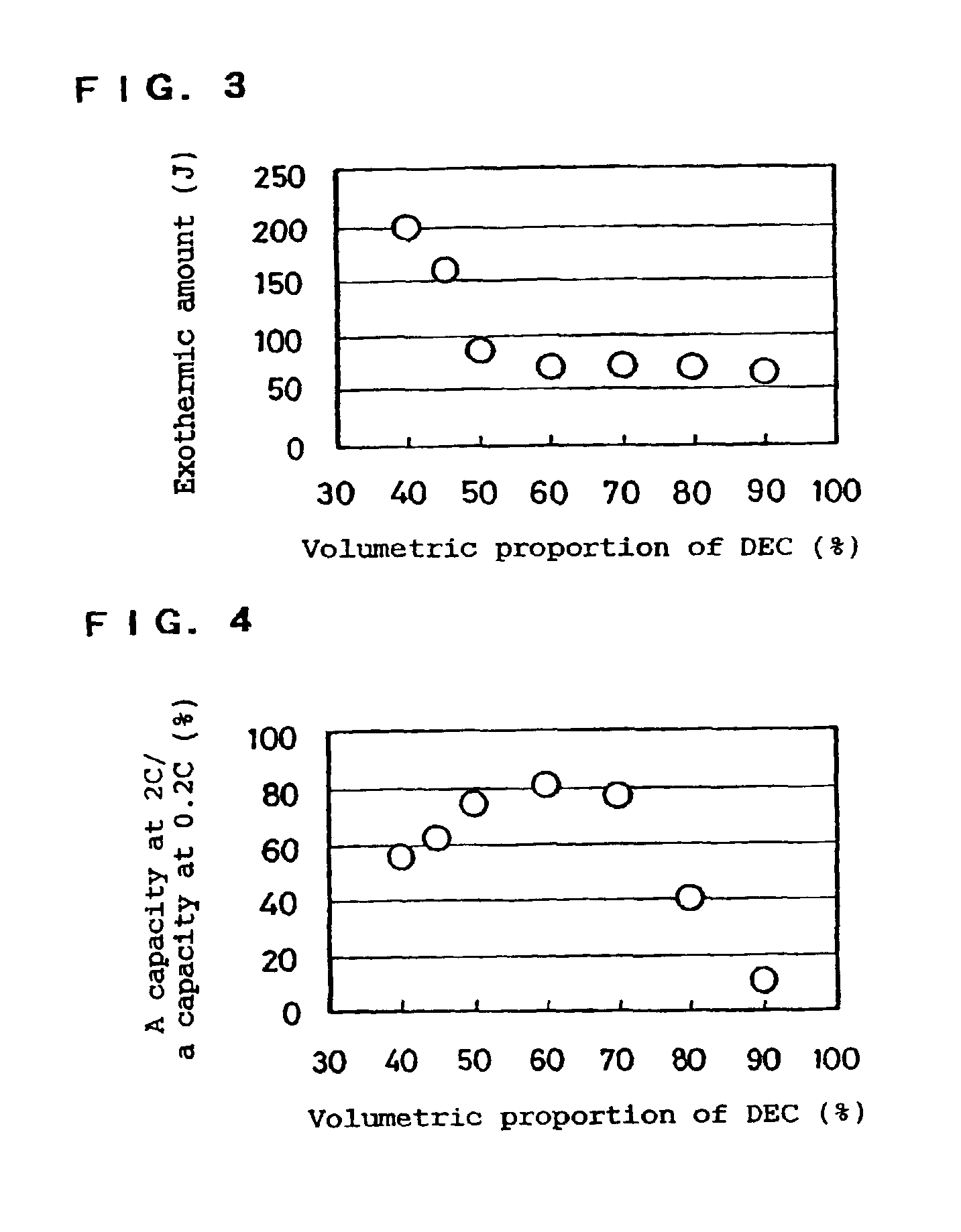Lithium polymer cell
a lithium polymer and polymer technology, applied in the direction of non-aqueous electrolyte cells, cell components, cell component details, etc., can solve the problems of battery in the overcharged state, abnormal battery temperature rise, and battery energy density decline, etc., to promote the softening of p(vdf-hfp)
- Summary
- Abstract
- Description
- Claims
- Application Information
AI Technical Summary
Benefits of technology
Problems solved by technology
Method used
Image
Examples
example 1
[0043]FIG. 1 is an upper view showing a lithium polymer battery prepared in each example, and FIG. 2 is a sectional view taken on line A-B thereof.
(i) Fabrication of Positive Electrode
[0044]100 parts by weight of lithium cobalt oxide (LiCoO2) as a positive electrode active material and 5 parts by weight of acetylene black as a conductive agent were dispersed in N-methyl-2-pyrolydone (hereinafter, referred to as NMP). Into the resultant dispersion, 8 parts by weight of P(VDF-HFP) powder as a binder or an electrolyte retainer per 100 parts by weight of lithium cobalt oxide (LiCoO2) was dissolved to obtain a paste. The P(VDF-HFP) used herein is composed of vinylidene fluoride unit and hexafluoropropylene unit at a monomer ratio of 88:12, and has a molecular weight of 477. This paste was applied on both sides of a positive electrode current collector 1a made of a lath aluminum (hereinafter, referred to as Al) foil and the whole was dried to form a positive electrode mixture layer 1b, th...
example 2
[0055]LiPF6 was dissolved at 1.25 mol / l in each mixture solvent of EC, PC and / or DEC having a composition shown in Table 2 to prepare 5 types of electrolytes. Further, DPE as an additive was respectively mixed in each electrolyte so that the amount of DPE was 4% by weight of the electrolyte in total. The batteries “h” to “l” were produced by using these electrolytes.
[0056]
TABLE 2SolventcompositionExothermic(vol. %)amountBatteryECDECPCAdditive(J)h50050DPE320i502030290j502525130k503020115l5050085
PUM
| Property | Measurement | Unit |
|---|---|---|
| temperature | aaaaa | aaaaa |
| temperature | aaaaa | aaaaa |
| temperature | aaaaa | aaaaa |
Abstract
Description
Claims
Application Information
 Login to View More
Login to View More - R&D
- Intellectual Property
- Life Sciences
- Materials
- Tech Scout
- Unparalleled Data Quality
- Higher Quality Content
- 60% Fewer Hallucinations
Browse by: Latest US Patents, China's latest patents, Technical Efficacy Thesaurus, Application Domain, Technology Topic, Popular Technical Reports.
© 2025 PatSnap. All rights reserved.Legal|Privacy policy|Modern Slavery Act Transparency Statement|Sitemap|About US| Contact US: help@patsnap.com



